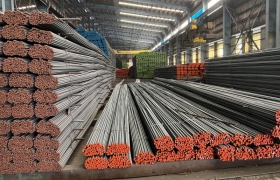- Luật
- Hỏi đáp
- Văn bản pháp luật
- Luật Giao Thông Đường Bộ
- Luật Hôn Nhân gia đình
- Luật Hành Chính,khiếu nại tố cáo
- Luật xây dựng
- Luật đất đai,bất động sản
- Luật lao động
- Luật kinh doanh đầu tư
- Luật thương mại
- Luật thuế
- Luật thi hành án
- Luật tố tụng dân sự
- Luật dân sự
- Luật thừa kế
- Luật hình sự
- Văn bản toà án Nghị quyết,án lệ
- Luật chứng khoán
- Video
- NGHIÊN CỨU PHÁP LUẬT
- ĐẦU TƯ CHỨNG KHOÁN
- BIẾN ĐỔI KHÍ HẬU
- Bình luận khoa học hình sự
- Dịch vụ pháp lý
- Tin tức và sự kiện
- Thư giãn

TIN TỨC
fanpage
Thống kê truy cập
- Online: 223
- Hôm nay: 198
- Tháng: 1621
- Tổng truy cập: 5245625
Whats behind the ballooning trade deficit
For years President Trump has been obsessed with trade deficits, (incorrectly) viewing them as a good measure of which countries are “winning” and which are “losing.” The United States has run a trade deficit for decades, thereby designating us a perennial loser in Trumps worldview. He promised to turn things around by picking a few easy-to-win trade wars.

A flag flies at the Port of Long Beach, Calif., last year. (MARK RALSTON/AFP/Getty Images)
Instead, by Trumps own measure, were bigger “losers” than ever before. The trade deficit just jumped to its largest size in a decade. Even worse: Our deficit in goods, which Trump for some reason emphasizes most, just hit its largest level ever.
There are a few takeaways from this news, including that trade was probably a bigger drag on growth last year than previously forecast. The new release (plus some other disappointing data reports from the past few days) suggests gross domestic product growth last quarter may get revised down from the initial estimate of a 2.6 percent annual rate. Worried about a continued drag from trade, some economists are also revising downward their forecasts for economic growth for the first quarter of 2019. (Macroeconomic Advisers, for instance, just lowered its Q1 forecast to 1.2 percent annualized.)
But the bigger question is this: Why exactly is the trade deficit expanding when Trump promised it would shrink? The answer largely (though not exclusively) has to do with Trumps own economic policies.
To be clear, trade deficits — whether bilateral or otherwise — are not necessarily bad, nor are they a sign that were being somehow “cheated” by other countries. They reflect broader trends in the economy, including savings and investment rates.
Small or shrinking trade deficits are also not necessarily a measure of a healthy economy; in fact, as Bloomberg Newss Shawn Donnan points out, the year the U.S. trade deficit shrank the most was 2009, which was not exactly a blockbuster year for the economy. We were at the tail end of the Great Recession then, and, because the economy was bad, Americans bought less stuff from abroad.
Today, the U.S. economy is healthy, with economic growth relatively robust. This is partly because of the fiscal stimulus Trump has been pumping into the economy, through both his tax cuts and federal spending hikes. Consumers have more money to spend, which means they demand more stuff, and companies have ramped up their imports to satisfy that demand.
Simultaneously, other countries — including China and members of the European Union — have not been doing so hot. With the U.S. economy doing well while other economies are faltering, and the Federal Reserve raising rates, the dollar has strengthened, making foreign products look cheaper and making our exports more expensive (i.e., less competitive) in other countries. That, too, leads to higher trade deficits … and its one of many reasons Team Trump might want to cool itwith the schadenfreude about other countries economic woes.
So in some ways then, Trumps preferred metric of “winning” is a victim of his own fiscally driven economic success. But its also a victim of his trade policy failures.
He has picked trade wars the world over, with friends and foes alike. He has also threatened even more tariffs, including an additional hike in tariffs on Chinese goods, a new “national security”-driven duty on auto imports, etc. These actions and threats have led to some predictable consequences.
One is that U.S. companies have stocked up on some imported goods to beat the tariffs, which increases imports in the short run. Higher imports = bigger trade deficit.
Another is that other countries have levied their own retaliatory tariffs on our own products — most famously, red-state goods such as soybeans and bourbon. So there has been less demand for U.S. exports. Lower exports also = bigger trade deficit.
Trump has pledged that once his brilliantly negotiated deals go through — the new North American Free Trade Agreement gets ratified by Congress, China fully capitulates to all his wildest demands, the European Union and Japan suddenly decide to buy more of our cars, etc. — our balance of trade will turn around. Theres reason to be skeptical, however, and not only because some of these objectives seem like fantasies.
Even the ones that look more plausible, such as the implementation of the new NAFTA, seem unlikely to move the needle. After all, the new NAFTA looks an awful lot like the old NAFTA, plus some language cribbed from the Pacific trade pact Trump pulled us out of.
In fact, the most significant change in the new NAFTA deal involves new content rules for autos, which are intended to lead to more manufacturing (and manufacturing jobs) in the United States. But as trade experts have pointed out, these new rules may be so costly to comply with that they could have the opposite of their intended effect, leading manufacturers to source less rather than more content from North America. Which could mean a boost to auto and auto parts imports, which would contribute to … you guessed it … a wider trade deficit.
By Catherine Rampell
Các bài viết khác
- Những thách thức cho nền kinh tế Việt Nam (27.03.2019)
- Điểm lại một số dự án dính “lệnh” thu hồi (27.03.2019)
- Bài 1: “Một con ngựa đau cả tàu trước nguy cơ... mất vốn”! (27.03.2019)
- Phối hợp để kiểm soát lạm phát (27.03.2019)
- Tp.HCM: Căng thẳng nguồn cung căn hộ, người có nhu cầu ở thực ngày càng gặp khó (27.03.2019)


















































 Yahoo:
Yahoo: 